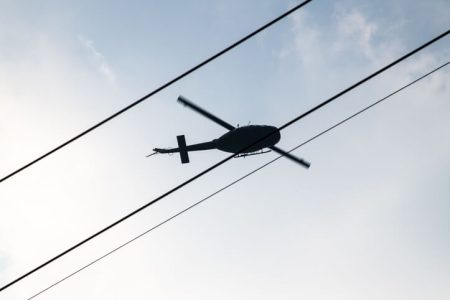Helicopter Wire Strike Safety Statistics
Wire strikes continue to be a major cause of helicopter accidents, even with wire strike protection systems (WSPS), Obstacle Collision Avoidance Systems (OCAS), Electronic Flight Bags (EFB) and wire markers on the wires themselves.
Why Do Wire Strikes Happen?
There are many reasons for wire strike accidents in helicopters. One of the most obvious is that most rotorcraft operations occur at low levels and are often at remote areas not designed for aviation. Off-airport landings with no instrument approaches make threats such as obstacles, terrain, and wires a dangerous scenario. The FAA has published the following reasons as the most probable causes in wire strike accidents:
- Inconspicuousness of power lines.
- Inadequate visual lookout.
- Failure to maintain sufficient clearance with the wires.
- Low angle of the sun.
- Failure to maintain proper altitude.
- Improper judgment.
- Lack of preflight planning.
- Darkness and lack of visual cues.
- Failure to see and avoid wires.
- Selection of an unsuitable area for landing.
- Distraction due to ground activity.
Strategies to Mitigate Wire Strike Accidents for Helicopter Pilots
There are many strategies that helicopter pilots can use to mitigate the risk of wire strike accidents. Many may seem like common sense or obvious, but distractions are everywhere, both on the ground before liftoff and while airborne, so paying extra attention to the following recommendations may just save your life:
- Thorough Pre-Flight Planning
Before any flight, conduct a comprehensive review of the route, focusing on areas with potential wire hazards. Use updated charts and maps to identify known wires and power lines along the flight path. Consider alternative routes that minimize exposure to wire hazards. - Utilize Wire Strike Protection Systems
Equip helicopters with wire strike protection systems (WSPS). These systems are designed to cut wires upon contact, reducing the risk of catastrophic accidents. Ensure regular maintenance and checks of these systems to verify their functionality. - Enhance Situational Awareness
Always maintain high situational awareness, especially during low-altitude operations. Pilots should be vigilant for unexpected wires and obstructions, particularly in unfamiliar areas or when visibility is reduced. - Leverage Advanced Technology
Use GPS and other navigation tools that can provide real-time data about the terrain and potential obstacles. Wire detection systems are increasingly available and can alert pilots to nearby wires, offering an extra layer of safety. - Ongoing Education and Training
Participate in regular training sessions focused on wire strike prevention. These can include simulator training, which offers realistic scenarios, and workshops that discuss the latest safety protocols and technological advancements. - Practice Effective Communication
Maintain clear communication with ground personnel, especially during operations in wire-dense areas. Ground teams can provide crucial information about wire locations and any changes in the environment. - Fly at Safe Altitudes
Whenever possible, maintain altitudes that provide a safe buffer from known wire hazards. Flying above the minimum safe altitude reduces the risk of encountering power lines and other wires. - Conduct Regular Risk Assessments
Before each flight, perform a risk assessment to identify and mitigate potential hazards, including wires. This proactive approach helps in anticipating issues and implementing precautionary measures. - Stay Updated with Industry Best Practices
Keep abreast of the latest industry standards and best practices related to wire strike prevention. Attend conferences, read industry publications, and engage with fellow aviation professionals to stay informed. - Report Wire Hazards
If you encounter a previously unreported wire hazard, report it to relevant authorities to update navigational resources. This proactive step can help improve safety for other pilots.
By implementing these strategies, helicopter pilots can significantly reduce the risk of wire strike accidents, enhancing safety for themselves and their passengers.
What Are Wire Detection Systems?
Advances in technology are protecting helicopters from contacting wires during low level operations, but not everyone has access to, or can afford to add expensive equipment. Current wire strike prevention technologies are available as either aircraft mounted or ground based, and there are also new potential ideas for future technology being developed right now. Some of the commercially available wire detection systems include:
- Laser scanning systems.
- Database dependent warning systems.
- Wire cutters.
- Radar scanners
- Aerial markers
The challenges of implementing safety devices are numerous, but at least the technology is currently available to prevent wire strike accidents and save lives. Without question, the future will see safer skies with extensive wire locating databases, but for now the best strategy is to stay alert, plan, and use every resource available.









